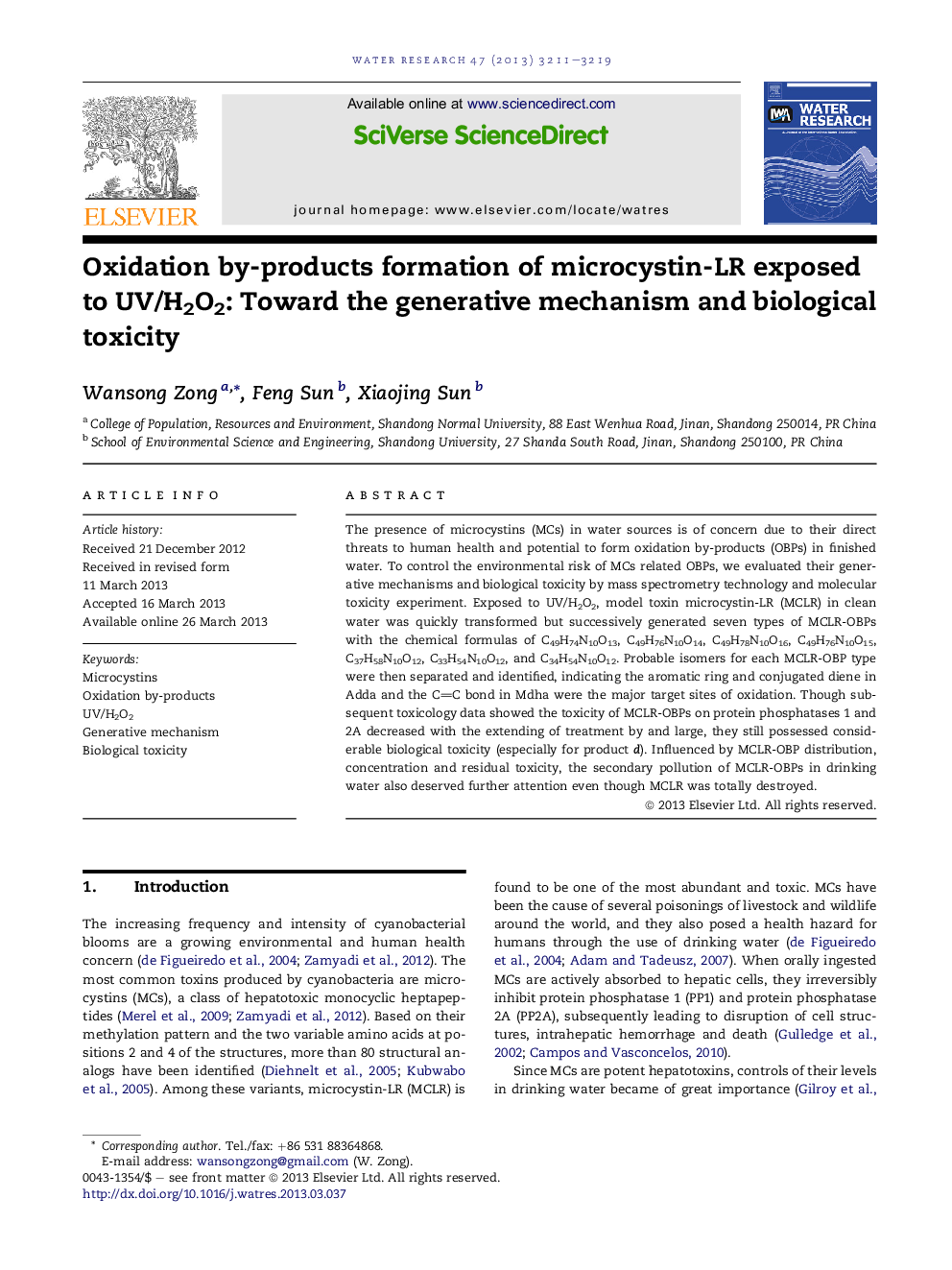| کد مقاله | کد نشریه | سال انتشار | مقاله انگلیسی | نسخه تمام متن |
|---|---|---|---|---|
| 4482136 | 1316848 | 2013 | 9 صفحه PDF | دانلود رایگان |

• Exposed to UV/H2O2, MCLR was quickly transformed but formed several MCLR-OBPs.
• Adda aromatic ring/conjugated diene and Mdha CC bond were the major target sites.
• Oxidation mechanism involved substitution, addition and dehydration reactions.
• Most MCLR-OBPs still possessed certain biological toxicity on PP1 and PP2A.
• MCLR-OBPs pollution also deserved further attention even though MCLR was destroyed.
The presence of microcystins (MCs) in water sources is of concern due to their direct threats to human health and potential to form oxidation by-products (OBPs) in finished water. To control the environmental risk of MCs related OBPs, we evaluated their generative mechanisms and biological toxicity by mass spectrometry technology and molecular toxicity experiment. Exposed to UV/H2O2, model toxin microcystin-LR (MCLR) in clean water was quickly transformed but successively generated seven types of MCLR-OBPs with the chemical formulas of C49H74N10O13, C49H76N10O14, C49H78N10O16, C49H76N10O15, C37H58N10O12, C33H54N10O12, and C34H54N10O12. Probable isomers for each MCLR-OBP type were then separated and identified, indicating the aromatic ring and conjugated diene in Adda and the CC bond in Mdha were the major target sites of oxidation. Though subsequent toxicology data showed the toxicity of MCLR-OBPs on protein phosphatases 1 and 2A decreased with the extending of treatment by and large, they still possessed considerable biological toxicity (especially for product d). Influenced by MCLR-OBP distribution, concentration and residual toxicity, the secondary pollution of MCLR-OBPs in drinking water also deserved further attention even though MCLR was totally destroyed.
Figure optionsDownload high-quality image (153 K)Download as PowerPoint slide
Journal: Water Research - Volume 47, Issue 9, 1 June 2013, Pages 3211–3219